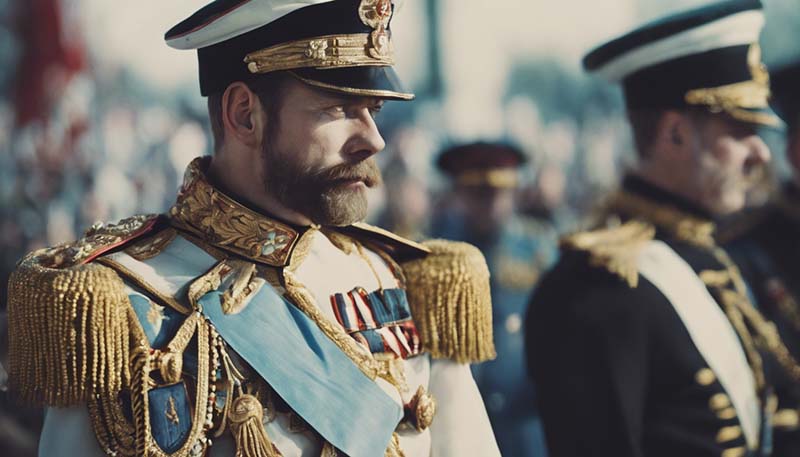Tsar Nicholas II: The Last Tsar of Russia and His Tragic End
Tsar Nicholas II: The Last Tsar of Russia and His Tragic End
Welcome to this in-depth exploration of the life and reign of Tsar Nicholas II, the last monarch of Russia from the House of Romanov. His rule was marked by political turmoil, social unrest, and ultimately, a tragic end that signaled the end of an era for Russia's imperial history.
Early Life and Ascension to the Throne
Nicholas II, born on May 18, 1868, was the eldest son of Tsar Alexander III and Maria Feodorovna (née Princess Dagmar of Denmark). Educated within the confines of the royal court, Nicholas was known to be shy and introverted, often preferring the company of his family to the political arena.
"I am not prepared to be a Tsar. I never wanted to become one," he reportedly said upon his father's death in 1894, which thrust him into the role of Russia's ruler.
Reign and Challenges
Nicholas II's reign began with the promise of reform but was quickly overshadowed by a series of political and social crises. His conservative approach to governance, coupled with a belief in the divine right of kings, often put him at odds with a growing population that demanded change.
Advertisement
The Russo-Japanese War and its Aftermath
The Russo-Japanese War of 1904-1905 was a significant turning point for Nicholas II's reign. The war ended in defeat for Russia and highlighted the inefficiencies and corruption within the Russian government and military.
The 1905 Revolution and the Promise of Reform
In the aftermath of the war, a revolution swept through Russia. In response to the public outcry, Nicholas II issued the October Manifesto, which granted civil liberties and established a national Duma (parliament). However, the concessions were often undermined by the Tsar's continued interference in the Duma's affairs.
World War I and the Fall of the Romanov Dynasty
Nicholas II's decision to enter World War I in 1914 further strained his relationship with the Russian people. The war effort was plagued by food shortages, military defeats, and economic hardship, leading to widespread discontent.
The February Revolution of 1917 saw Nicholas II abdicate in favor of his brother, Grand Duke Michael, who shortly after also renounced the throne, marking the end of the Romanov dynasty and the Russian imperial autocracy.
The Tragic End
Following the abdication, Nicholas II and his family were exiled to Siberia under house arrest. In July 1918, during the Russian Civil War, the Bolsheviks, under the direction of Vladimir Lenin, executed the entire Romanov family in the basement of the Ipatiev House in Yekaterinburg.
The brutal end of the Romanovs was kept secret for some time, with the Soviet government only acknowledging the execution in 1920. The Romanovs' remains were not discovered until 1991, and their deaths continue to be a source of historical fascination and debate.
Legacy and Historical Significance
The reign and execution of Tsar Nicholas II are significant markers in the history of Russia. His rule represents the final chapter of the Romanov dynasty and the end of the tsarist autocracy, paving the way for the Russian Provisional Government and, eventually, the rise of the Soviet Union.
Nicholas II's life and tragic end serve as a cautionary tale about the dangers of autocratic rule and the importance of responsive governance. His story is a stark reminder of the seismic shifts that can occur when the needs and desires of a nation are ignored by its leadership.

For Further Reading:
- "Nicholas and Alexandra" by Robert K. Massie
- "A Lifelong Passion for History" by Alexander Mikaberidze
*This article is a work of original content created for illustrative purposes and may not accurately reflect historical facts or perspectives.